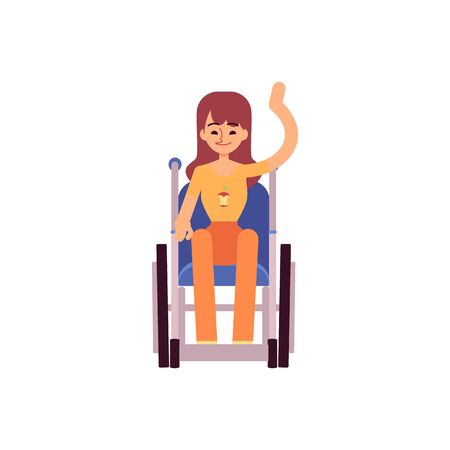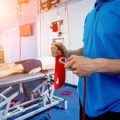Understanding Aphasia: Causes and Impact
Aphasia is a language disorder that affects a person’s ability to communicate. It can make it difficult for someone to speak, understand others, read, or write. In the United States, aphasia most commonly affects adults, especially after certain types of brain injuries. Let’s explore what causes aphasia and how it impacts daily life.
What Is Aphasia?
Aphasia happens when parts of the brain that control language are damaged. It is not a problem with intelligence; rather, it’s a challenge with finding the right words or understanding language. People with aphasia know what they want to say but have trouble expressing it.
Main Causes of Aphasia
| Cause | Description | Common in U.S. Adults? |
|---|---|---|
| Stroke | Blood flow to the brain is interrupted, damaging language centers. | Yes (most common cause) |
| Traumatic Brain Injury (TBI) | A blow or jolt to the head injures the brain’s language areas. | Yes (car accidents, falls, sports injuries) |
| Brain Tumors | Tumors in or near language regions can disrupt communication skills. | Less common |
| Brain Infections or Diseases | Certain infections or conditions like dementia may affect language areas. | Occasional |
How Aphasia Affects Communication
The impact of aphasia varies widely. Some people have mild difficulty finding words; others might lose nearly all ability to use or understand language. Here are some ways aphasia can show up:
- Trouble speaking or coming up with words
- Difficulty understanding spoken conversation
- Trouble reading or writing sentences
- Mistakes in word choice or sentence structure
- Frustration during social interactions due to communication barriers
Aphasia and Daily Life in the U.S.
Aphasia can change many aspects of daily living for American adults, from ordering coffee at a local café to joining family conversations. Relationships, employment, and independence may be affected. Many people find new ways to connect using gestures, drawing, or technology—such as speech apps—to help bridge communication gaps.
2. Types of Aphasia: Recognizing Key Differences
Aphasia can show up in many different ways depending on which part of the brain is affected. Understanding the main types helps families and professionals recognize symptoms early and support recovery better. Here, we break down the most common types you’ll hear about in the U.S.—Broca’s, Wernicke’s, Global, and other less common forms—using simple language and real-life examples.
Broca’s Aphasia (Nonfluent Aphasia)
People with Broca’s aphasia often have trouble getting words out, but they usually know what they want to say. They might speak in short phrases or single words and leave out small connecting words like “is” or “the.” Their understanding of spoken language is usually pretty good, especially for simple sentences.
How it looks in real life:
- Speech is slow and requires effort
- May say things like “Want… coffee” instead of “I want some coffee”
- Can get frustrated because they know what they want to say but can’t get it out easily
- Usually understand what others are saying, unless it’s a complex sentence
Wernicke’s Aphasia (Fluent Aphasia)
This type is almost the opposite of Broca’s. People with Wernicke’s aphasia can speak in long sentences that sound smooth but may not make sense or use the right words. They often don’t realize their speech isn’t clear to others, and understanding what others say is also hard for them.
How it looks in real life:
- Talks easily and quickly, but sentences may be jumbled or include made-up words
- Might say something like “The book was flying over the dinner chair” when trying to talk about reading at dinner
- Has trouble understanding what people say to them
- Often doesn’t realize their speech isn’t making sense
Global Aphasia
This is the most severe type and happens when there’s widespread damage to the language areas of the brain. Both speaking and understanding are very limited.
How it looks in real life:
- Might only be able to say a few words or sounds
- Understanding spoken language is also very limited
- Tends to happen right after a major stroke or brain injury
- Communication is extremely challenging without help from gestures or pictures
Other Types of Aphasia
There are other, less common forms of aphasia. These include:
- Anomic Aphasia: Trouble finding the right word, especially names of objects; speech is fluent otherwise.
- Conduction Aphasia: Can understand and speak fluently but has trouble repeating phrases or words.
- Transcortical Motor/Sensory Aphasia: Similar to Broca’s or Wernicke’s but with better ability to repeat phrases.
A Quick Comparison Table
| Aphasia Type | Main Speech Features | Understanding Others | Common Real-Life Signs |
|---|---|---|---|
| Broca’s (Nonfluent) | Slow, effortful; short phrases; leaves out small words | Mainly good with simple sentences | Says “want coffee”; gets frustrated; knows what they want to say |
| Wernicke’s (Fluent) | Talks smoothly; uses wrong/made-up words; sentences may not make sense | Poor; struggles to grasp meaning of conversations | Says things that don’t fit the topic; unaware of mistakes |
| Global | Very limited speech; may only use sounds/words | Poor; hard time understanding anything spoken | Says little or nothing; relies on gestures/pictures |
| Anomic | Trouble finding right word; otherwise speaks well | Mainly good | Says “thing” instead of object names |
| Conduction | Speaks fluently but cant repeat words/phrases well | Mainly good | Trouble repeating back what is said |
If you notice these signs in yourself or someone else after a stroke or head injury, reach out to a healthcare provider or speech-language pathologist for help. Early recognition makes a big difference in recovery.

3. Comprehensive Assessment: Diagnosing Aphasia in Adults
Diagnosing aphasia is a critical first step to help adults get the right support and therapy. In the United States, clinicians use a combination of methods to ensure an accurate diagnosis. Let’s take a closer look at how American healthcare professionals assess aphasia in adults.
Clinical Interviews: Understanding the Patient’s Story
The assessment process usually begins with a clinical interview. During this conversation, speech-language pathologists (SLPs) or other clinicians talk with the patient and their family members. The main goals are:
- To gather details about when symptoms started and how they have changed over time
- To learn about medical history, especially any recent strokes or brain injuries
- To understand daily communication challenges in real-life situations
This initial step helps guide the next parts of the assessment process.
Standardized Tests: Measuring Language Abilities
After the interview, clinicians often use standardized tests to measure the person’s language skills more precisely. These tests are designed to be fair and reliable so that results can be compared across different people and settings. Some commonly used tests in the U.S. include:
| Test Name | Main Purpose | Areas Assessed |
|---|---|---|
| Boston Diagnostic Aphasia Examination (BDAE) | Classify type and severity of aphasia | Speaking, understanding, reading, writing |
| Western Aphasia Battery (WAB) | Identify aphasia type and overall language function | Fluency, comprehension, repetition, naming |
| Aphasia Diagnostic Profiles (ADP) | Quickly screen for aphasia and related difficulties | Language production, comprehension, social communication |
These tools help clinicians pinpoint which aspects of language are most affected and plan personalized treatment.
The Role of Interdisciplinary Healthcare Teams
Aphasia often involves more than just language problems. That’s why American clinics rely on interdisciplinary teams—groups of experts who work together for the best patient care. These teams may include:
- Speech-Language Pathologists (SLPs): Lead assessment and therapy for communication issues
- Neurologists: Diagnose underlying brain conditions like stroke or traumatic brain injury
- Occupational Therapists: Support daily activities and cognitive skills affected by aphasia
- Social Workers: Help with emotional support and community resources for families
This team approach ensures that all aspects of a person’s health are considered during assessment and recovery planning.
4. Evidence-Based Recovery Approaches
Speech-Language Therapy: The Foundation of Aphasia Recovery
In the United States, speech-language therapy is the primary treatment for adults with aphasia. Licensed speech-language pathologists (SLPs) work closely with individuals and their families to develop personalized therapy plans. These plans focus on improving communication skills, such as speaking, understanding, reading, and writing. Therapy may take place in hospitals, outpatient clinics, or even at home through telepractice sessions.
Common Speech-Language Therapy Techniques
| Technique | Description | Setting |
|---|---|---|
| Melodic Intonation Therapy (MIT) | Uses melody and rhythm to improve speech production, especially for those with non-fluent aphasia. | Individual or group sessions |
| Constraint-Induced Language Therapy (CILT) | Encourages use of spoken language by restricting alternative forms of communication. | Intensive daily practice |
| Script Training | Teaches functional phrases and sentences for everyday situations. | Practice at home and in therapy |
| Augmentative and Alternative Communication (AAC) | Includes devices or communication boards for those with severe aphasia. | Clinic or community setting |
Technological Aids: Bridging the Communication Gap
Technology plays a growing role in aphasia recovery. Many Americans use apps, software, and devices to practice language skills outside therapy sessions. Some popular options include:
- Aphasia-friendly apps: Apps like Constant Therapy and Tactus Therapy offer interactive exercises tailored to different types of aphasia.
- Speech-generating devices: High-tech AAC devices can speak messages aloud, helping users communicate in daily life.
- Teletherapy platforms: Remote video sessions make it easier for people in rural or underserved areas to access expert care.
Community Resources: Support Beyond the Clinic
The U.S. offers a wide range of community resources to support individuals with aphasia and their loved ones. These resources provide social connection, practical advice, and opportunities to practice communication skills in real-world settings.
Key Community Resources for Aphasia Recovery
| Resource Type | Description | How to Access |
|---|---|---|
| Aphasia Support Groups | Local or virtual groups where members share experiences and practice communication together. | Aphasia.org, local hospitals, senior centers |
| Aphasia Centers & Programs | Counseling, group therapy, and education for people living with aphasia. | Aphasia Recovery Connection, Lingraphica’s online listings |
| Family Education Workshops | Training sessions that help family members learn supportive communication strategies. | Sponsoring clinics or nonprofit organizations like the National Aphasia Association (NAA) |
| Cultural & Recreational Activities | Museum tours, book clubs, or art classes designed for people with communication challenges. | Museums’ accessibility programs; local libraries; parks & recreation departments |
This evidence-based approach—combining professional therapy, technology, and community support—gives adults living with aphasia in the U.S. a strong foundation for recovery and improved quality of life.
5. Navigating Life with Aphasia: Advocacy and Support
Understanding the Everyday Challenges
Aphasia can change how people communicate, but it doesn’t have to limit life’s possibilities. Individuals with aphasia, their families, and caregivers can use practical strategies to support communication and daily activities. This section offers easy-to-follow tips and information about advocacy, legal rights, and local resources in the United States.
Practical Tips for Communication
| For Individuals with Aphasia | For Families & Caregivers |
|---|---|
| Use gestures, pictures, or drawing to express ideas Carry a communication card explaining aphasia Practice saying important words or phrases Take your time—don’t rush conversations |
Speak slowly and clearly Ask yes/no questions when possible Give plenty of time for responses Avoid correcting speech too often—focus on understanding |
Advocacy and Legal Rights in the U.S.
People with aphasia are protected by several U.S. laws that guarantee access and inclusion:
- Americans with Disabilities Act (ADA): Ensures equal rights in workplaces, public spaces, and transportation.
- Section 504 of the Rehabilitation Act: Provides accommodations in schools and public programs.
- Social Security Disability Insurance (SSDI): May offer financial support if work is affected.
How to Advocate for Yourself or a Loved One
- Request accessible materials (written info, large print, visual aids) at hospitals or government offices.
- If denied services or accommodations, you can file a complaint with the Department of Justice or seek help from disability advocacy groups.
- Create an emergency contact card listing aphasia and key medical needs.
Community Organizations and Resources
| Name of Organization | What They Offer |
|---|---|
| Aphasia Recovery Connection (ARC) | Online support groups, webinars, peer connections |
| National Aphasia Association (NAA) | Education materials, nationwide event listings, help finding local support groups |
| American Speech-Language-Hearing Association (ASHA) | Provider directories, patient rights guides, advocacy resources |
| Your Local Center for Independent Living (CIL) | Peer counseling, legal aid referrals, skills training for independent living |
Getting Involved in the Community
- Join local or online aphasia groups for social connection and shared experiences.
- Attend workshops or seminars to learn new communication tools.
- If able, participate in awareness campaigns during National Aphasia Awareness Month each June.
Caring for Yourself as a Family Member or Caregiver
- Pace yourself—caregiving can be demanding. Take breaks when needed.
- Seek out counseling or caregiver support groups to share your experience.
- You’re not alone—reach out to community organizations listed above for advice or emotional support.


